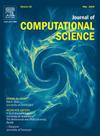An embedding-based method for inferring novel interlayers in multilayer networks
IF 3.7
3区 计算机科学
Q2 COMPUTER SCIENCE, INTERDISCIPLINARY APPLICATIONS
引用次数: 0
Abstract
In biology, networks are applied for modelling heterogeneous entities (e.g., gene, disease, drugs) and their own interactions. In this context, the multilayer networks allow modelling multiple types of interactions on independent layers, which are in turn interconnected by interlayer edges. Link prediction is a crucial task, e.g., which allows discovering of novel relationships between biological entities (e.g., proteins and genes). The state-of-the-art reports several methods focused on link prediction. However, no one is specifically designed for inferring entire interlayers between the unconnected layers of a multilayer network. In this paper, we presented an in-house method for the inference of entire interlayers from pairs of unconnected layers of interest. The proposed method exploits two main approaches: the first constructs a set of primitive links between unconnected layers of interest, based on properties intrinsic to graph network models; the second refines these based on more complex features denoted from node embeddings to infer the candidate interlayer edges, which ultimately constitute the resulting interlayer. In our experimentation, the proposed method has exhibited an effective capability in inferring novel interlayers, even when the number of nodes within the layers of interest increase. Performance was evaluated by using several well-known Key Performance Indicators. Briefly, results showed an improvement by +15.73% and +116.38% in terms of F1-Score and MCC, respectively. Furthermore, the accuracy improved on average by +46.30%, as can also be seen from ROC-AUC and PR-AUC, which showed +44.48% and +38.45%, respectively.
基于嵌入的多层网络新型互层推断方法
在生物学中,网络被用于模拟异质实体(如基因、疾病、药物)及其相互作用。在这种情况下,多层网络允许在独立层上建模多种类型的相互作用,这些相互作用又通过层间边缘相互连接。链接预测是一项至关重要的任务,例如,它允许发现生物实体之间的新关系(例如,蛋白质和基因)。最先进的报告几种方法集中在链接预测。然而,没有人是专门设计来推断多层网络中未连接层之间的整个中间层的。在本文中,我们提出了一种内部方法,用于从感兴趣的未连接层对推断整个中间层。提出的方法利用了两种主要方法:第一种方法是基于图网络模型固有的属性,在未连接的感兴趣层之间构建一组原始链接;第二种方法基于从节点嵌入中表示的更复杂的特征对这些特征进行细化,以推断候选层间边缘,最终构成最终的层间边缘。在我们的实验中,即使当感兴趣的层内的节点数量增加时,所提出的方法也显示出推断新中间层的有效能力。绩效评估采用几个著名的关键绩效指标。简而言之,结果显示F1-Score和MCC分别提高了+15.73%和+116.38%。准确率平均提高了+46.30%,ROC-AUC和PR-AUC的准确率分别提高了+44.48%和+38.45%。
本文章由计算机程序翻译,如有差异,请以英文原文为准。
求助全文
约1分钟内获得全文
求助全文
来源期刊

Journal of Computational Science
COMPUTER SCIENCE, INTERDISCIPLINARY APPLICATIONS-COMPUTER SCIENCE, THEORY & METHODS
CiteScore
5.50
自引率
3.00%
发文量
227
审稿时长
41 days
期刊介绍:
Computational Science is a rapidly growing multi- and interdisciplinary field that uses advanced computing and data analysis to understand and solve complex problems. It has reached a level of predictive capability that now firmly complements the traditional pillars of experimentation and theory.
The recent advances in experimental techniques such as detectors, on-line sensor networks and high-resolution imaging techniques, have opened up new windows into physical and biological processes at many levels of detail. The resulting data explosion allows for detailed data driven modeling and simulation.
This new discipline in science combines computational thinking, modern computational methods, devices and collateral technologies to address problems far beyond the scope of traditional numerical methods.
Computational science typically unifies three distinct elements:
• Modeling, Algorithms and Simulations (e.g. numerical and non-numerical, discrete and continuous);
• Software developed to solve science (e.g., biological, physical, and social), engineering, medicine, and humanities problems;
• Computer and information science that develops and optimizes the advanced system hardware, software, networking, and data management components (e.g. problem solving environments).
 求助内容:
求助内容: 应助结果提醒方式:
应助结果提醒方式:


